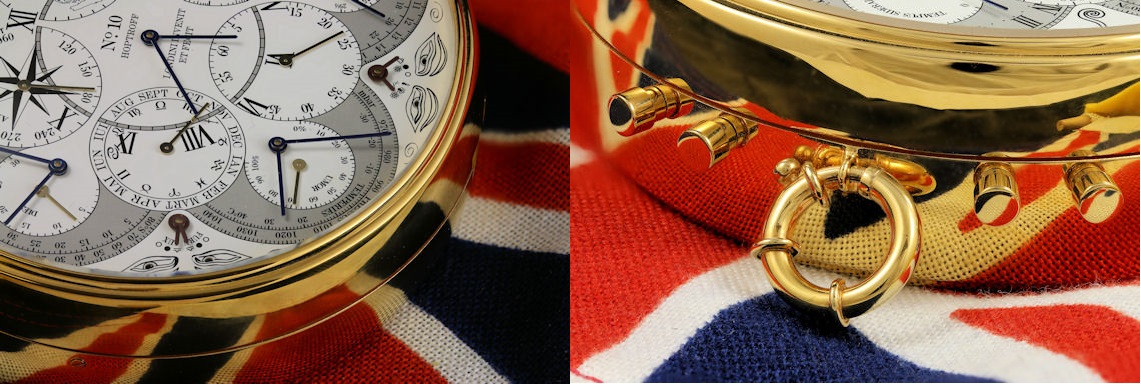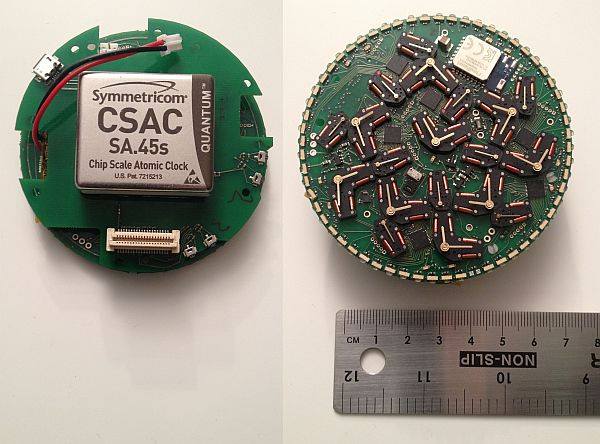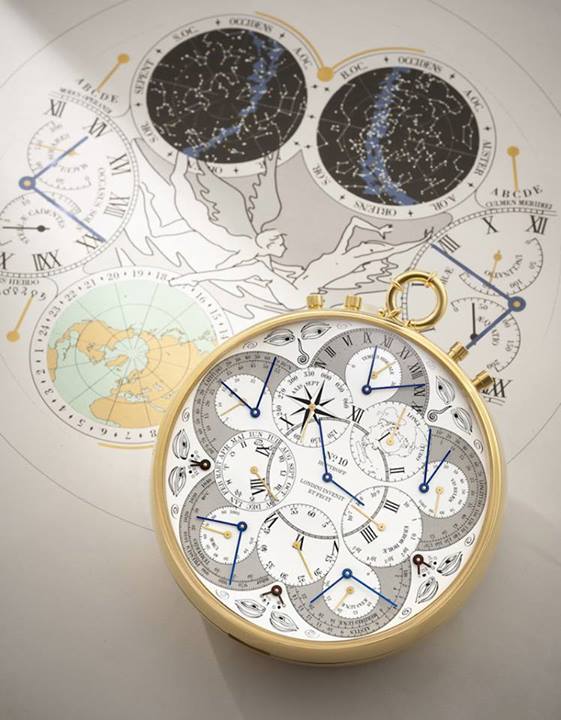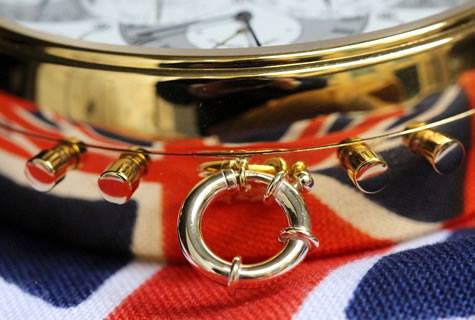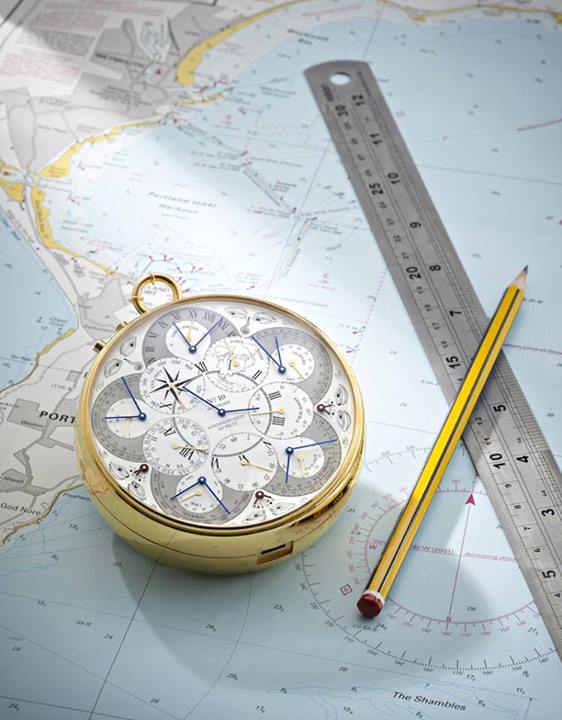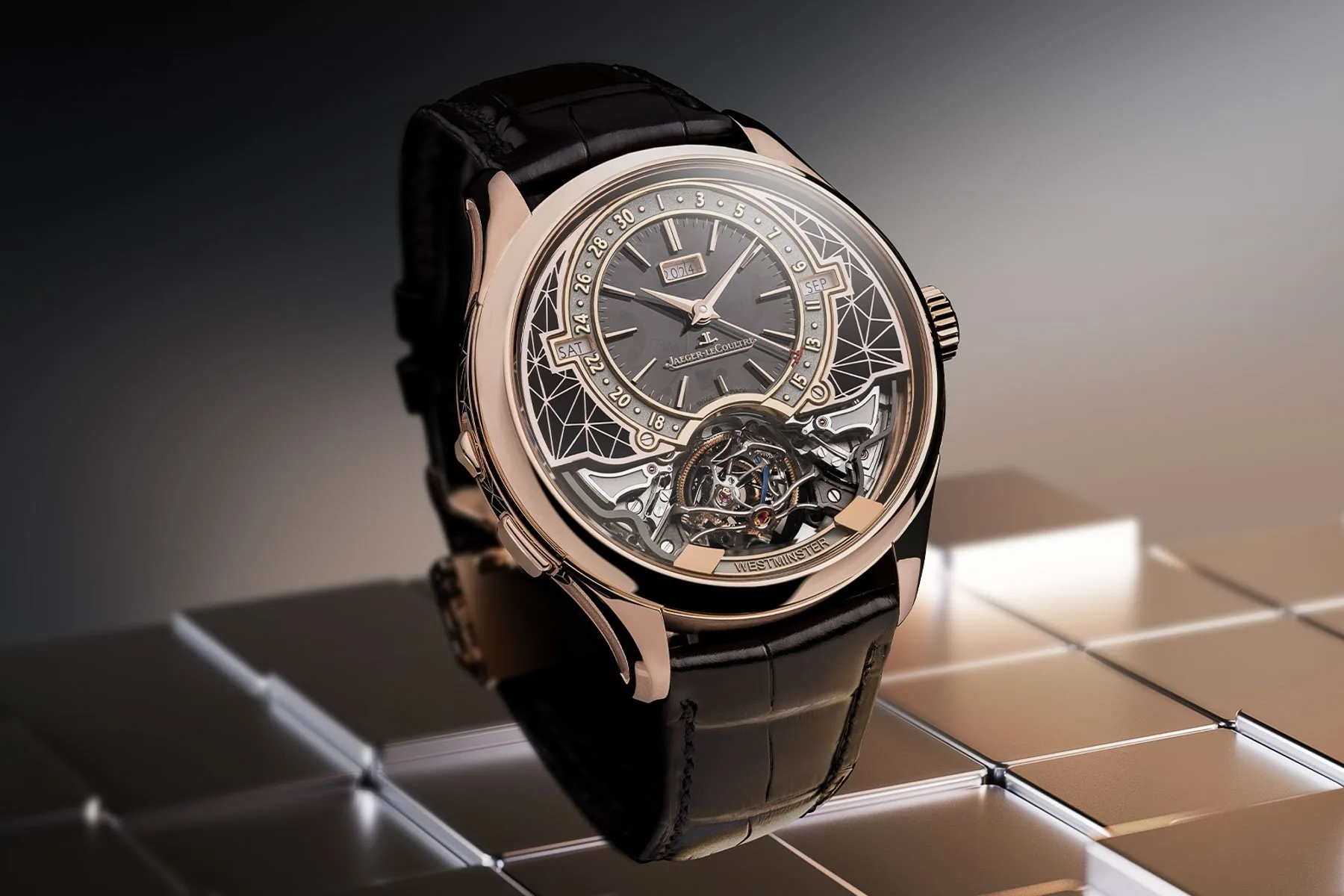By Jonathan Kopp
Today we give you little extra focus on a watch presented in 2013 at Salon QP in London – An atomic pocket watch called the No. 10 made by the London based company Hoptroff.
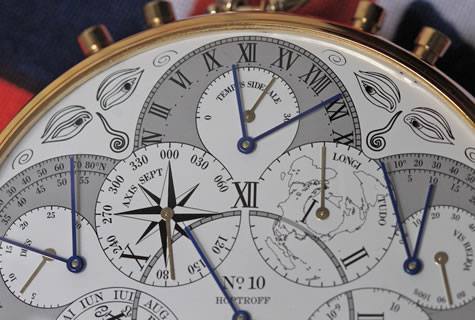
Just to let you know, before we break down the facts: “Hoptroff says it’s the most accurate movement ever, losing one and a half seconds every thousand years — that’s 240,000 times more accurate than Big Ben.”
It’s just incredible and I think it is the first time that an atomic time source has been used in a pocket watch movement.
Hoptroff delivers elegant dress watches, which embrace the very latest technology. A quartz movement ,manufactured in-house is complimented by Bluetooth technology to allow wireless time and data updates. Each timepiece in the collection offers a different personal assistance service. Pioneering manufacturing technologies allow a degree of bespoke customisation last seen in the true luxury maisons of the past. Each timepiece is unique and answers to only one owner.
The rest of the collection looks really interesting, and shows fairly reasonable price.
Unfotunately I wasn’t in London for the last Salon QP, but I’ll try to meet Richard during my next trip in the UK Capital to see this watch in real and of course the whole collection.
This pocket watch, measure 82 mm in diameter and 25 mm thick, and is equipped with a true prowess on the technical side. Indeed, to the rear of the dial is a small compartment, which contains cesium 133, a laser, whose role is to react the atom, and a tiny generator of microwave, very accurately measuring the passage of time.
Product description :
The No. 10 is one of the most remarkable timepieces in the history of horology: the first watch to be regulated by its own atomic clock, rather than a balance spring, a pendulum or quartz. It is accurate to one and a half seconds per thousand years. Not just marginally better than other watchmaking movements, but thousands of times so.
Not content with that, Hoptroff has created one of the most complicated watches ever conceived. The front dial alone has 28 pointers, ranging from celestial functions such as sidereal time and tidal harmonics to reports from on-board sensors for temperature, pressure, humidity and compass heading. The rear dial is due for completion in 2014 and is expected to contain a further 20 moving indicators.
The golden-drum case echoes the classical styling of Harrison’s Sea Watch No.1 or Patek Philippe’s Calibre89. “If Huygens, Harrison or Breguet were alive today,” says managing director Richard Hoptroff, “I’m convinced they would have made the same technology and design choices.”
The No. 10 was first conceived as a navigational aid. With only this extraordinary timepiece and a sextant, it is possible to determine one’s latitude and longitude to within a nautical mile – a traditional system, and the keystone of horological accuracy, updated for the 21st century with the atomic precision ofthe Hoptroff No. 10. It is a shame, then, that only twelve pieces will ever be made.
DialGuide
TEMPUS (Time)
The current 12-hour time (local and UTC selectable), as measured by the atomic clock.
1. Hour, 1 – 12
2. Minute, 0 – 59
3. Seconds (atomic), 0 – 59
TEMPUS SIDERALE (Sidereal Time)
Sidereal time measures the rotation of the earth relative to the stars, rather than the sun. Although it uses a “24-hour” clock dial, each sidereal “day” is actually 23hours, 56 minutes 4 seconds long. This is why the seconds hands (3) and(6) are not in sync. Stars rise and set at the sidereal time every day.
1. Sidereal hours, 0 – 23 (retrograde), as measured by atomic clock
2. Sidereal minutes, 0 – 59 (retrograde)
3. Sidereal seconds, 0 – 59 (pendulum)
LONGITUDO (Longitude)
Longitude measures the angular position east or west of Greenwich, UK. This value is set with a sextant using the noon sight method, in order to compare local noon with achronometer reference time, just as Harrison did, except with an atomic clockand without the need to refer to admiralty tables.
1. Longitude – coarse degrees, 180°E – 180°W
2. Longitude – fine degrees, 0° – 180° (retrograde)
3. Longitude – minutes, 0’ – 59’ (retrograde)
VIS RELIQA (Power Remaining)
· Battery power remaining, 100% – 0%
ERROR HORÆ (Time Error)
From moment the time isset, timekeeping slowly drifts. (In the case of atomic timekeeping, extremely slowly.) The Time Error is a measure of the maximum degree to which timekeeping could have drifted.
· Time error, 10-9s – 10s (logarithmic)
ÆTAS LUNÆ (Moon Age)
The traditional moon ageindication, in days since the new moon.
· Moon age in days, 0 – 29½ (retrograde)
MERIDIES LUNÆ (LunarTransit)
The local time when the moon will be highest in the sky. Moonrise will be six hours before lunar transit, moonset will be six hours after.
· Transit time, 00:00 – 23:50 (retrograde)
AESTUS (Tide)
The local tideheight. Tidal harmonics vary throughout the globe, based on the relative positions of the sun and moon, and the local geography. First modelled by Sir William Thomson in 1860, these eight tidal harmonics are stored for three thousand ports worldwide. The closes port is selected for the indication. It is the most complex complication in the timepiece.
· Tide height, -½m – 15m
UMOR (Humidity)
· Relative humidity, 0% – 100%, as measured by on-board instrument, with 24-hour historic animation
TEMPERIES (Temperature)
· Temperature, -40°C – 50°C, as measured by on-board instrument, with 24-hour historic animation. (Note: Usage below -35°C is not recommended due to battery chemistry.)
PRESSUS (Pressure)
· Atmospheric pressure, 955mbar – 1045mbar, as measured by on-board instrument, with 24-hour historic animation
ANNUS (Annual wheel)
The annual wheel smoothly completes a rotation once per year.
· Month, Jan – Dec. Common constellation of solar transit, ^ – i (Aries – Pisces)
LATITUDO (Latitude)
Latitude is the angular position north or south of the equator. After a noon sight is taken, thenoon sun height is entered on this dial, and then the actual latitude is determined relative to the declination of the sun.
1. Latitude – minutes, 0’ – 59’ (retrograde)
2. Latitude – degrees, 90°S – 90°N
DIES (Date)
· Day of the month in the local time zone, 1 – 31 (perpetual).
AXIS SEPT (Due North)
· Due north, as measured by on-board instrument, with 24-hour historic animation. Selectable correction for magnetic deviation from true north
THE ATOMIC CLOCK
The most accurate ‘pendulum’ yet discovered is the wavelength of light emitted or absorbed during an electron’s transition between higher and lower energy states. The No.10’s physics package measures the atomic transitions of Caesium gas held in a tiny vial. An oven heats it to a constant 130°C to ensure that temperature changes do not affect the sensors. A laser pumps the electrons into transition, and a microwave resonator then locks onto the transition frequency. A digital signal processor then counts 4,596,315,885 such transitions to determine that a second has elapsed.
In watchmaking terminology, it ticks at a rate of 1.6 x 1013 (16 million million) vibrations per hour, and the resulting tick is accurate to one and a half seconds per thousand years.
Why is this accuracy necessary? For marine navigation. Even the most accurate temperature compensated quartz movements drift by several seconds per year. Every second inaccuracy equates to a nautical mile in navigational terms.
FURN (Oven)
· Oven status: Off, On, Stable.
LUX (Laser)
· Laser status: Off, On, Stable.
μUNDA (Microwave)
· Microwave resonator status: Off, On, Stable.
FLUX (Power)
· Atomic clock power: Charging, External Power, Discharging.
TIMEKEEPING MODE
· Timekeeping mode: Pure Atomic (A), Atomic Disciplined Quartz (ADQ), Temperature Compensated Crystal Oscillator (TCXO).
ATOMIC RESONANCE DETECTOR
· Atomic resonance detection: Off, On, Locked.
PUSHERS
Control pushers. Functionality to be finalized
Hoptroff watches are designed and made in London, right down to the movement inside. Their combination of electronic and mechanical innovations offers a level of captivating functionality and deep personalization that no other watchmaker can match, repeatedly achieving breakthroughs in the design and manufacture of tailored timepiece collections.
The team over at Hoptroff:
Richard Hoptroff (Owner and Inventor)
Sarah Hoptroff (Style Director)
Mike Plevey (Technical Director)
For more info, please visit hoptroff.com
Jonathan Kopp – Contributing Writer
Jonathan Kopp has an avid enthusiasm for timepieces of all genre, from vintage timepieces to modern Luxury Haute Horology. His preference goes to small and independent high-end watchmakers. He loves the difference rather than classicism, although if he admits to being in love with several ultra-classics pieces. Jonathan was caught by the passion for watchmaking there are almost 6 years. For about 5 years, he wanders in this industry and was Communication-Marketing-PR Consultant for several brands. He has worked for over 2 years as a freelance for the development of the Swiss brand Arthur Oskar Stampfli (AOSWatches). Read his articles here.
To keep in touch with Jonathan you can follow him on the various social networks : Instagram,Facebook and Twitter.
P.S: He is also a huge fan of fashion, travel and cinema.
